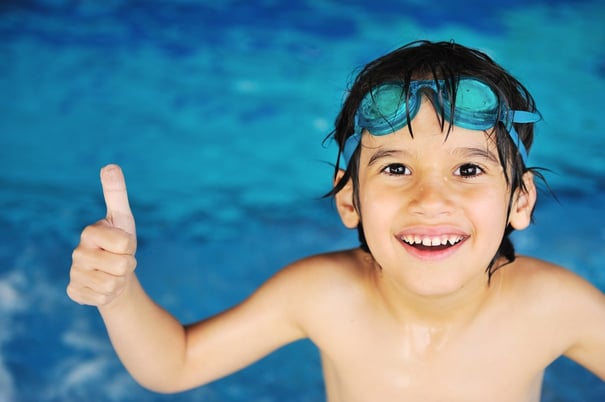For many Canadian families, summer includes activities such as boating and swimming. Each year, tragic and avoidable water-related fatalities occur across Canada. A Canadian Red Cross report examining these fatalities over 10 years revealed many common factors.

Common Factors in Water Safety
- Young children ages 1 to 4 and men ages 15 to 44 are at the greatest risk of drowning.
Drowning is one of the leading causes of unintentional death for Canadian children age one to four years. - A small child can disappear in seconds and can drown in only a few centimetres of water—enough to cover the mouth and nose. Typically these drownings occur in backyard pools, toddler pools, the bathtub, or at the beach.
- Small children are also the most vulnerable group for near drownings. For every death, there are an estimated four to five additional near-drowning incidents, which require hospitalization and often result in varying degrees of brain damage.
- Infants and toddlers drowned mainly in bathtubs and pools, whereas older children and youth drowned mainly in large bodies of water.
- Other factors for adults in water-related fatalities include alcohol consumption.
Water Safety in Addition to Skills
Though important, swimming skills alone aren’t always enough to save a life. Many drowning incidents involve other factors that swimming skills alone cannot prepare an individual for. Learning water safety - such as how to prepare for an emergency, and what to do if one should occur - is key to preventing an emergency in or on the water. Swimming skills combined with knowledge prevents drownings.
Ontario Racquet Club teaches both swimming skills and water safety. The infant and preschool program, Red Cross Swim Preschool, teaches caregivers strategies on how to effectively supervise children around water and teaches preschoolers not to go near the water without an adult.
Prevention
Active supervision
- The absence of adult supervision is a factor in most child drownings.
- Whether it’s a pool, the bathtub, a water park, or the beach, always watch children actively around water - even if they can swim.
- Consider requiring all non-swimmers to wear a lifejacket to keep them at the surface to assist you while supervising.
- Backyard pools are especially dangerous for small children. Ensure adequate barriers are in place such as four-sided fencing along with a self-closing, self latching gate.
- Empty portable toddler pools after each use.
- When bathing infants or toddlers, an adult should remain with the child at all times - children should never be relied upon to supervise other children in the bath.
- Diving headfirst into water should be avoided unless the individual is properly trained and is sure that the water is deep enough.
- Avoid diving in home pools and always enter the water feet-first.
Open water
- Never underestimate the power of current. Swimmers or waders can be swept away in an instant, particularly if non-swimmers or weak swimmers get caught by current in rivers or out of their depth in abrupt drop-offs.
- Be cautious about swimming in currents, and know what to do if caught in a current.




